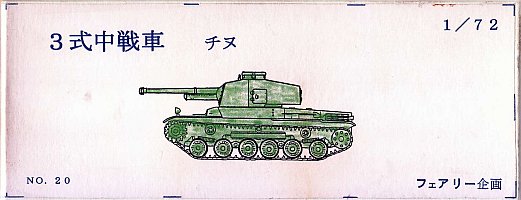|
Historical background:
Type 3 Chi-Nu was one of the many improvements of Type 97 Chi-Ha in a series of medium tanks began with Type 1 Chi-He. Type 3 Chi-Nu had the same hull and
suspension as Type 97 Chi-Ha but a larger turret with a Type 3 75mm cannon, one of the heaviest guns ever built in a Japanese tank during the war. The Type 3 gun
was based on a Japanese Type 90 cannon, which in itself was based on a French Canon de 75 M (montagne) modele 1919 Schneider cannon.
Type 3 Chi-Nu was quickly developed to deal with the American M4 Sherman tank which was superior to any tank from the Imperial Japanese Army. The original
successor of Type 97 Chi-Ha was to be the Type 4 Chi-To, but the development of this tank was delayed and there was a a need for quick emergency solution. The development
of Type 3 Chi-Nu began in May 1943 and was completed in October of the same year with development being only half a year. The tank was did not enter production until
1944 and by war's end only 166 units had been built.
Crew - 5
Length - 5.64m
Width - 2.41m
Height - 2.68m
Weight - 18.2 ton
Armor - varied from 8mm > 50mm
Main Armament - Type 3 75mm cannon
Secondary armament - 1 x 7.7mm Type 97 machine gun
Engine - 240hp (197KW) Mitubishi Model 100 V-12 diesel engine
Speed (on road) - 39km/hr
Operation range - 210km
Kit:
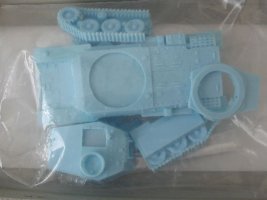

The kit comes in a carton box measuring 21.5cm x 8.5cm x 3cm. Parts are separate packed in separate plastic bags and contains only 16 parts cast in light blue resin.
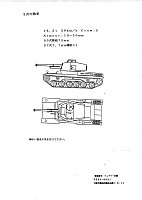
- A 4-side drawing is all that is included as an instruction manual.
- There is no painting guide.
- There are no decals.
- The few tools are molded directly on the fenders.
Parts:
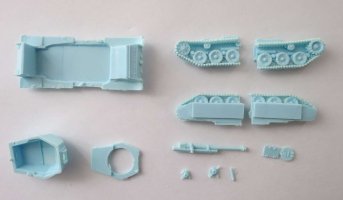
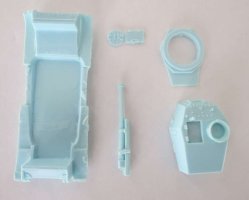 The hull is cast in one part and is hollow.
The hull is without a bottom and requires the builder to make one.
The topside and sidewalls are without air bubbles but have some flash.
The hull is cast in one part and is hollow.
The hull is without a bottom and requires the builder to make one.
The topside and sidewalls are without air bubbles but have some flash.
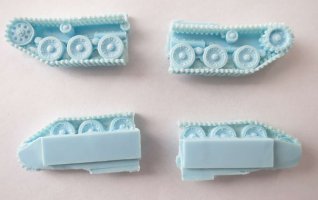
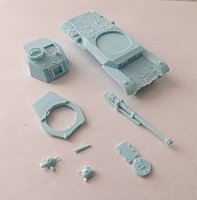 The tracks are cast in 2 parts and are very simplified.
All of the parts have flash that will need to be carefully removed.
The tracks are cast in 2 parts and are very simplified.
All of the parts have flash that will need to be carefully removed.
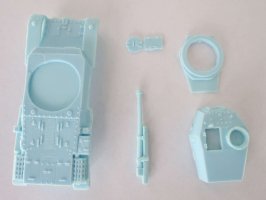
Hatches on the hull and turrets are separate pieces.
The casting is a little rough.
Conclusion:
This model is best suited for collectors only, especially those with an interest in the "Japanese War Theatre". With so few parts, the model makes for a simple
build out-of-the-box.
To make the model more presentable will require a lot of work and some experience in modeling.
References:
[1] Wikipedia
Review sample received from an independent third party donor.
|
